The Historical Qasr Prison Museum: A Travel Guide
Have you ever delved into Ken Follet's novel "On Wings of Eagles"? If you have, then you're already familiar with the iconic Qasr Prison.
Once infamous for its bitter memories, Qasr Prison was one of Iran's most dreaded penitentiaries. Today, however, Qasar Prison has transformed into a fascinating museum and a must-visit destination for those interested in exploring Iran's history.
The museum comprises two former prisons, one for criminals and another for political prisoners, surrounded by beautifully landscaped gardens. Join us as we explore the intriguing architecture, captivating artworks, and the stories held within these walls.
Museum of the Qasr Prison History
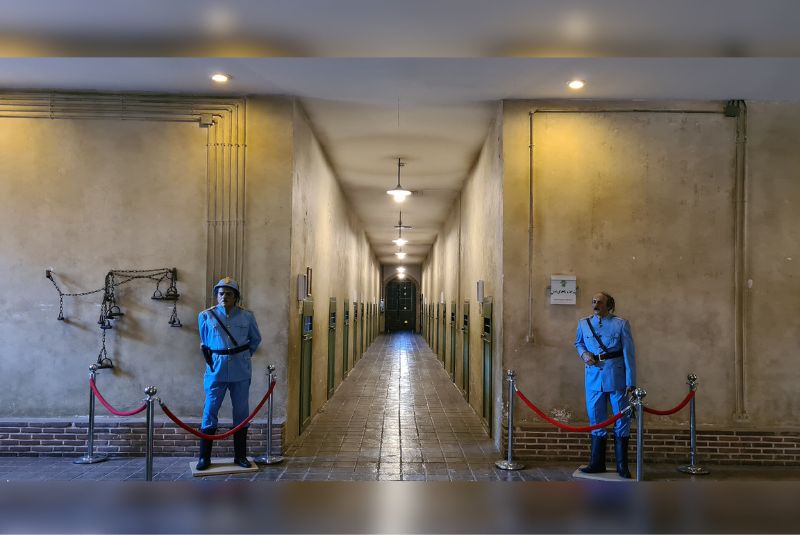
The museum of Qasar Prison holds a fascinating history that spans centuries. Qasr means 'castle' and the name "Qasr Prison" is derived from the former Qajar Palace that once stood on the site. It was originally built in 1790 as a palace with sprawling gardens during the reign of Fath-Ali Shah of the Qajar dynasty. However, Naser-al-Din Shah showed little interest in this palace, and as per his orders, the premises were designated as a location for the annual Kazakh army, marking the beginning of the region's military utilization.
In 1929, the palace was repurposed as a prison, becoming the first modern detention center in the country, where prisoners were granted legal rights.
Architect Nikolai Markov, a Georgian who settled in Iran after the Russian Revolution, played a pivotal role in the prison's transformation. Employing a blend of urban industrial design and traditional Iranian elements, such as the iconic Markovian bricks made of adobe, he rebuilt the prison, creating 192 rooms to accommodate around 700 prisoners, including approximately 100 solitary cells.
The prison's dark legacy includes the administration of lethal air injections by Ahmad Ahmadi, known as "Dr. Ahmadi," to several of Reza Shah's opponents, including the poet Mohammad Farrokhi Yazdi. After Reza Shah's overthrow in 1941, Ahmadi faced trial for these murders and was ultimately executed in 1943.
In the late 1970s, the Red Cross undertook extensive reforms, transforming the prison into a facility that staff members colloquially referred to as a "hotel." Prominent figures such as Ayatollah Khomeini, Ali Khamenei, Morteza Motahhari, and Ayatollah Taleqani were held in its cells. On February 11, 1979, following the Revolution, 1,000 women were released from the prison.
In the aftermath of the Revolution, Qasar Prison became a place of detention and execution for numerous civil and military officials from the previous regime, including Nader Jahanbani, Amir Hossein Rabi'i, Major General Manuchechr Khosrodad, and Prime Minister Amir Abbas Hoveida.
After falling into disuse for several decades, the prison underwent a transformation in 2005 when it was designated as a museum by the ICHTO (Iranian Cultural Heritage, Handicrafts, and Tourism Organization). In 2008, the prison was donated to the municipal government, and in 2012, the former prison buildings and offices were reopened as museum spaces, surrounded by a public park bearing the same name. The museum hosts various cultural events, including the Nowrooz festival, and in 2013, it was honored as the most creative museum in the country by the Iranian Students News Agency. Today, the museum of Qasar Prison stands as a testament to Iran's tumultuous past and offers visitors a glimpse into its complex history.
| Discover: Tehran Palaces | Iran's Historical & Cultural Heritage
Architecture of the Museum of Qasr Prison
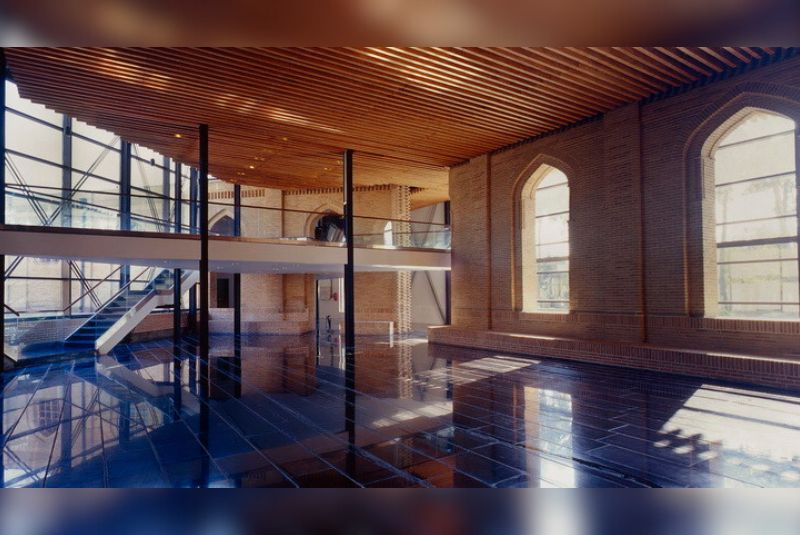
The architecture of the museum of Qasar Prison is characterized by its unique features and historical significance. The original palace, situated atop a hill, boasted four maintenance towers positioned at each corner, giving it an imposing and castle-like appearance rather than that of a traditional royal palace.
Notably, the palace lacked outer windows, further enhancing its fortress-like design. This architectural choice contributed to its resemblance to a military stronghold rather than a conventional palace.

Surrounding the building are expansive gardens, divided by swimming pools and clear streams, creating a serene and picturesque setting. The entrance to the palace is marked by a tall structure offering breathtaking views of the cityscape.
The prison palace itself featured a circular, three-story design. Its balconies, enclosed by fences, served as a means for air circulation within the prison.
| Learn about: Vank Cathedral | Persian & Armenian Cultural Masterpiece
Different Sections of the Museum of the Qasar Prison
The museum of Qasar Prison is divided into different sections, each offering a unique experience:
1. Markov Museum
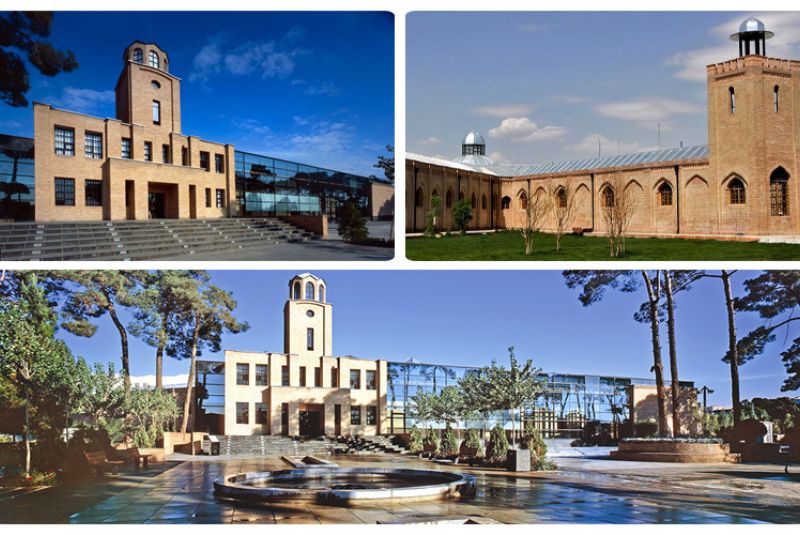
This section encompasses various spaces, including a document center, exhibitions displaying pictures and historical objects, a monsoon gallery, a gallery café, a multipurpose auditorium, and a permanent bookstore. Visitors can explore the rich history of the revolution, political campaigns, and prison-related literature.
The Zurkhaneh, a traditional Iranian gymnasium, is also part of this section. Notably, this building briefly held Lawrence of Arabia, leaving his image cutouts in one of the cells.
2. Farrokhi Yazdi Hall
It is located on the west side of the complex and this amphitheater can accommodate up to 200 people. It is equipped with audio and video systems. It serves as a venue for conferences, letter readings, live music performances, theater productions, and film screenings.
| Suggestion: Tehran Museum of Contemporary Art
3. Political Prison
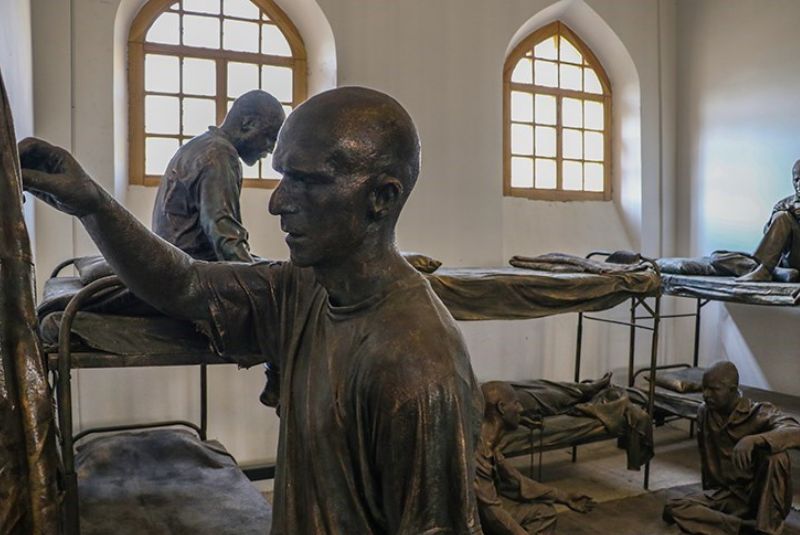
Covering an area of 5,000 square meters, this section vividly portrays the history of the revolution and the courageous fighters of the Islamic Revolution. It includes prisons, libraries, study centers, museums, a Hosseiniyeh (a Shia Islamic prayer hall), and a prison hotel.
4. Watch Tower
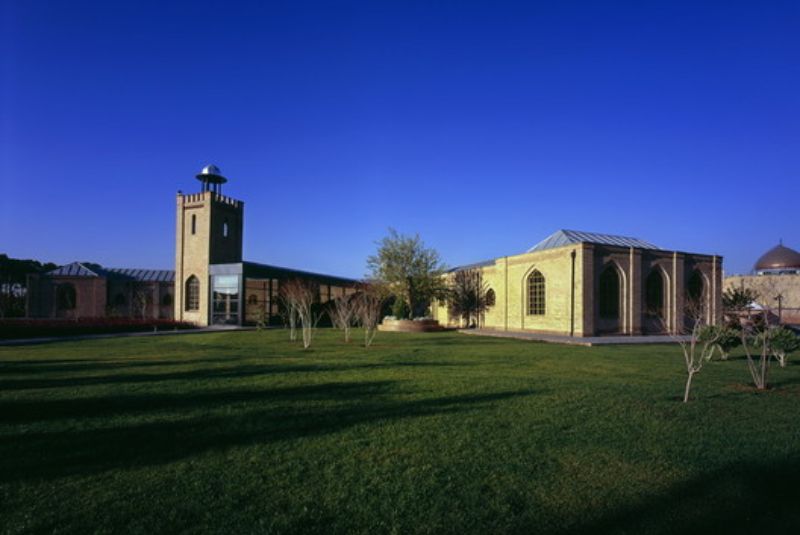
Observation towers are situated in the corners of the museum's perimeter. The southeast tower provides telescopes and binoculars for astronomical and urban observation, allowing visitors to enjoy unique views.
5. Shrine
This historic building served as a venue for early Islamic Revolutionary Tribunals. It features beautiful tilework and holds significant cultural and historical value.
| Read more: Top 16 Most Beautiful Mosques in Iran
6. Iranian Garden
Covering an expansive 5,000 square meters, the Iranian garden showcases a variety of plants, including elm, pine, grape, sycamore, mulberry, beimanon, Tabriz, and Sarvenaz. This serene garden is located on the eastern side of the museum, providing a peaceful and picturesque environment for visitors to relax and appreciate nature.
First Qasr Museum Prisoner
One fascinating aspect of the museum of Qasar Prison is its association with its founder. Brigadier General Mohammad Dargahi played a significant role in the establishment of the prison. Recognizing the necessity for a new correctional facility, he advocated for its construction.
During the inauguration of the prison by Reza Shah, an intriguing incident occurred. Dargahi extended an invitation to the king to experience the conditions of a prison cell firsthand. As a result, Reza Shah imprisoned Dargahi for two days, making him one of the initial prisoners to be held in Qasr Prison.
| Read more: Famous Iranians
Famous and Important Prisoners of Qasr Prison

Qasar Prison has housed numerous famous prisoners throughout its history, leaving a significant impact on the narrative of the museum. One notable figure is Alawi, who chronicled his years of incarceration, along with the experiences of other prisoners, in a book titled "53 People."
During the Pahlavi era, the prison served as a place of confinement for several prominent Islamic figures. Among them were Ayatollah Seyyed Ali Khamenei, Ayatollah Taleghani, Akbar Hashemi Rafsanjani, Morteza Motahari, and Shahid Bahonar. There are reports suggesting that even Ruhollah Khomeini, the leader of the Islamic Revolution, spent a brief period of time in Qasr Prison.
In addition to these notable individuals, the prison also witnessed daring escapes. Two American executives, Paul Chiapparone and Bill Gaylord, managed to escape from Qasr Prison. Another remarkable escape occurred when Seyed Farhad Nami, a prominent opponent of the Shah's regime, executed the largest and most famous prison escape in the years preceding the revolution. Furthermore, during Mohammad Reza Shah's reign, Ashraf Dehghan successfully escaped from the prison.
| Learn more: The History of Azadi Tower in Tehran
Museum of the Qasr Prison Tickets
The ticket prices for the museum of Qasar Prison in Tehran are as follows:
- Iranian Visitors: The entry price for Iranian visitors is 100,000 Rials.
- Non-Iranian Visitors: The entry price for non-Iranian visitors is also 100,000 Rials.
Opening Hours
The museum of Qasr Prison welcomes visitors during the following opening hours:
- Saturdays to Wednesdays: 8:30 AM to 2:30 PM
- Thursdays: 8:30 AM to 1:30 PM
Please note that the museum complex is closed on Fridays and official holidays.
Best Time to Visit
The best time to visit the Museum of Qasr Prison is during the spring and autumn seasons when the weather is pleasant and mild.
Plan your visit during weekdays as it is closed on Fridays and remember to check the museum's opening hours in advance.
| Suggestion: Top 10 Historical Sites of Iran
Museum of the Qasr Prison Location
The Museum of the Qasr Prison location is at the end of Shahid Motahari Street, Naja Shohada Street, in the bustling Police Square of Tehran. It is easily accessible to visitors. It can be accessed by different transportation options.
How to Get There
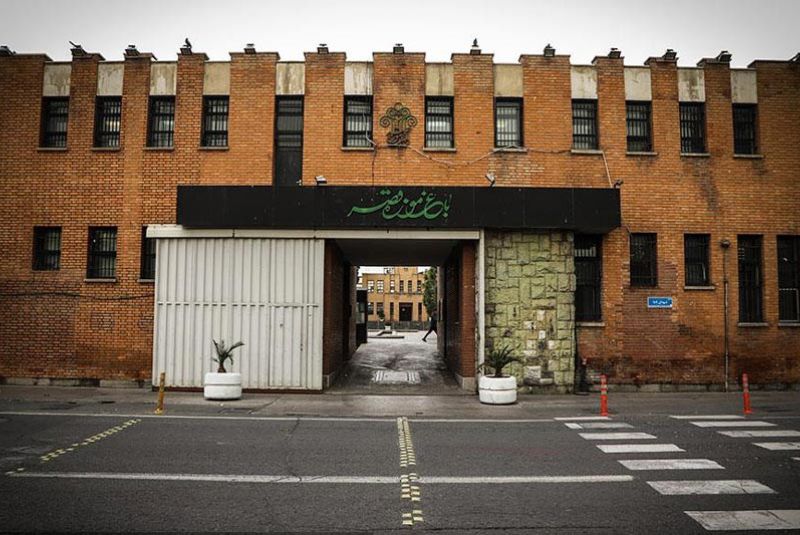
The museum of Qasar Prison is conveniently located on Ali Sayad Shirazi Highway, Police Square, in Tehran province. Visitors have various transportation options to reach the museum, including private cars and public transportation such as the subway and bus.
Subway: If you prefer to use the subway, you can take Line 1 or the Tajrish Line. Get on the subway train and disembark at Shahid Mofatteh Subway Station. From there, you can reach the museum by heading to the end of Motahari Street, passing the Shariati intersection.
Bus: Another option is to take the bus. Here are the recommended bus routes:
- From Emam Khomeini Terminal, board the bus heading to Moallem Square. Alight at the Museum of the Qasar Prison bus station.
- From Resalat Square Terminal, take the Piche-Shemiran bus. Get off at the Police Square bus station.
- From Resalat Square Terminal, again, take the Piche-Shemiran bus and disembark at the Police Square bus station.
| Discover: Iran UNESCO World Heritage Sites
Attractions Near The Museum of Qasr Prison
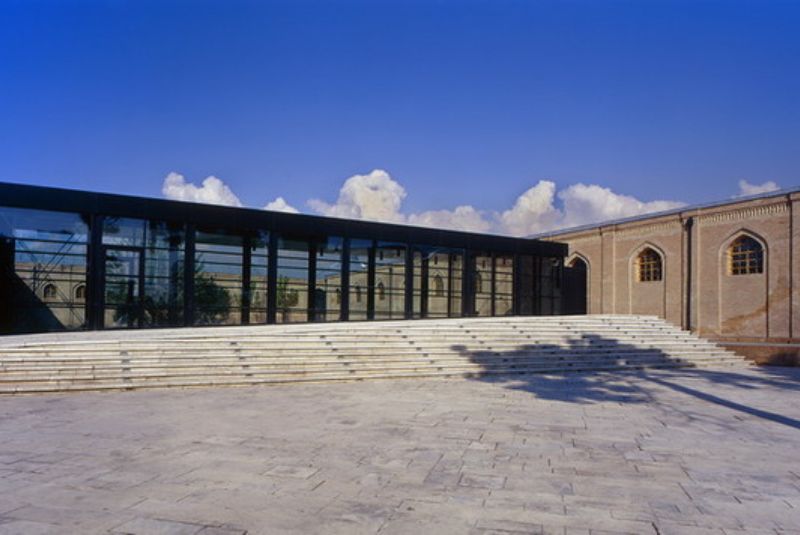
The museum of Qasar Prison is located in a vibrant area of Tehran, offering visitors a range of tourist attractions in its vicinity. Here are some notable places near the Qasr Museum prison:
Qasr Park
Situated approximately 300 meters away from the museum garden, Qasr Park is a charming green space in Tehran. Within a short 3-minute walk, visitors can enjoy the serene surroundings and take a break amidst nature. The park's address is Shahid Sayyad Shirazi Highway, Police Station, between Nader and Shohadaye Naja.
| Read more: Elements of Persian Architecture
Persian Plaza Hotel
For those seeking accommodation near the museum, Persian Plaza Hotel is conveniently located in the Abbasabad district of Tehran. It is a mere 1-kilometer walk, taking approximately 16 minutes, from the Tehran Museum Garden. The hotel can be found at North Sohrevardi Street, Kayhan Crossroads, East Mirzaee Zeinali Street, No. 42.
Tehran's Saba Garden Traditional Restaurant
Just across from the museum garden, visitors can find the delightful Saba Garden Traditional Restaurant. Located on Shariati Street, this restaurant offers a unique dining experience. It is easily accessible from the garden, with a short 3-kilometer drive taking less than 10 minutes. The restaurant serves guests from 11 am to 8 pm every day of the week.
| Also read about: Iran's Ziggurats
Tehran's Miniature Museum Garden
Situated on West Janbazan Street, at the corner of Imam Ali Highway, Tehran's Miniature Museum Garden is a captivating attraction. This museum garden, showcasing intricate miniatures, is approximately 5 kilometers away from the palace museum garden. Visitors can reach it within a 10-minute drive.
Bottom Line
The museum of Qasar Prison is a captivating testament to the evolving history of this remarkable site. Originally built as a palace by the Qajar dynasty in 1790, it later transformed into a prison designed by Russian architect Nikolai Markov. Today, the museum complex stands as a unique blend of historical preservation and artistic expression, occupying two former prisons—one for criminals and another for political prisoners. With 192 rooms accommodating up to 700 prisoners, including solitary cells, the museum offers a glimpse into the past. Surrounded by a serene public park, it now serves as an educational and reflective space for visitors to explore and appreciate the rich heritage of Qasr Prison.
Share your story!
Comment below and let us know about your Experience.
Your story inspires others!


Comment
Leave a Comment